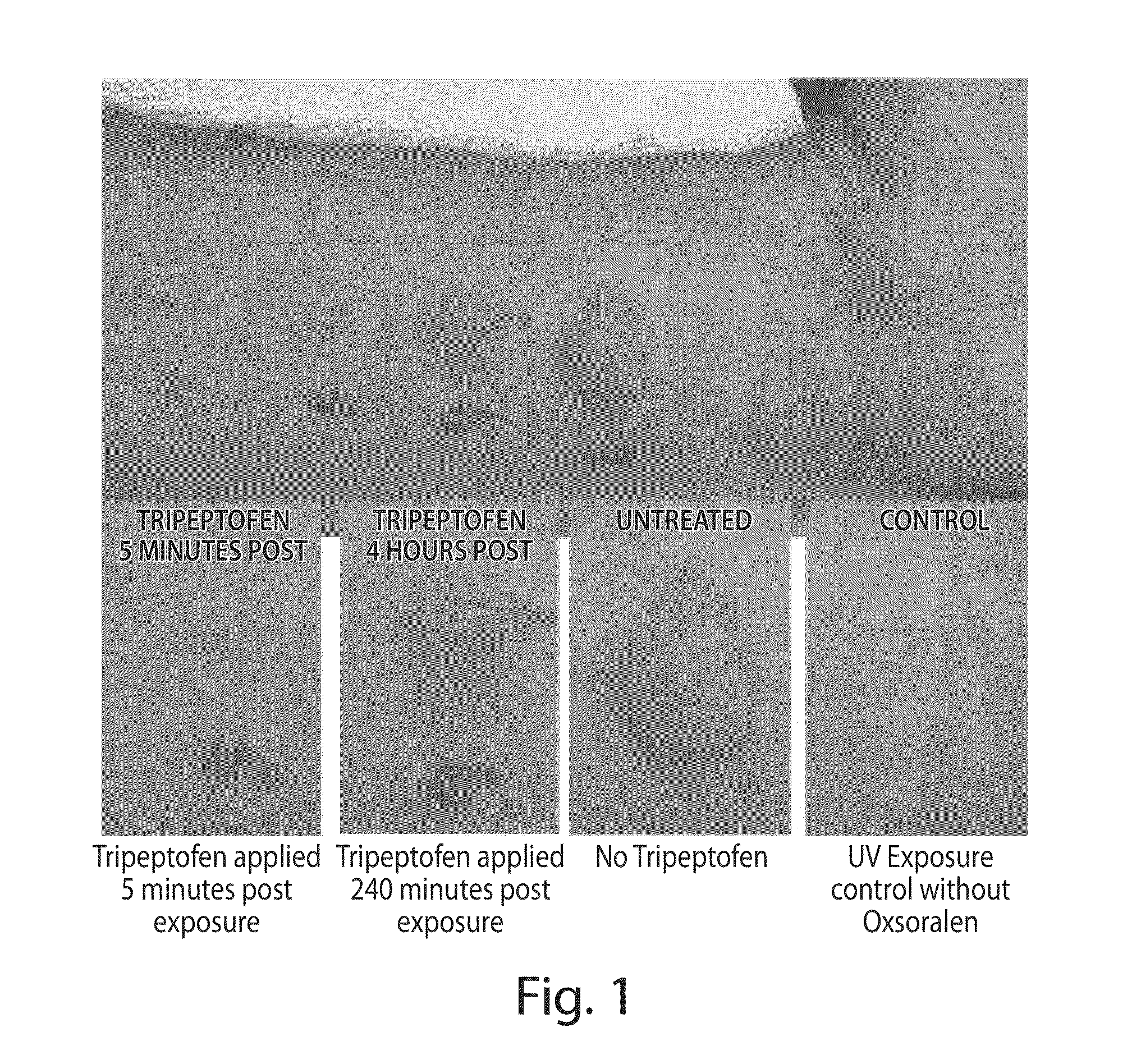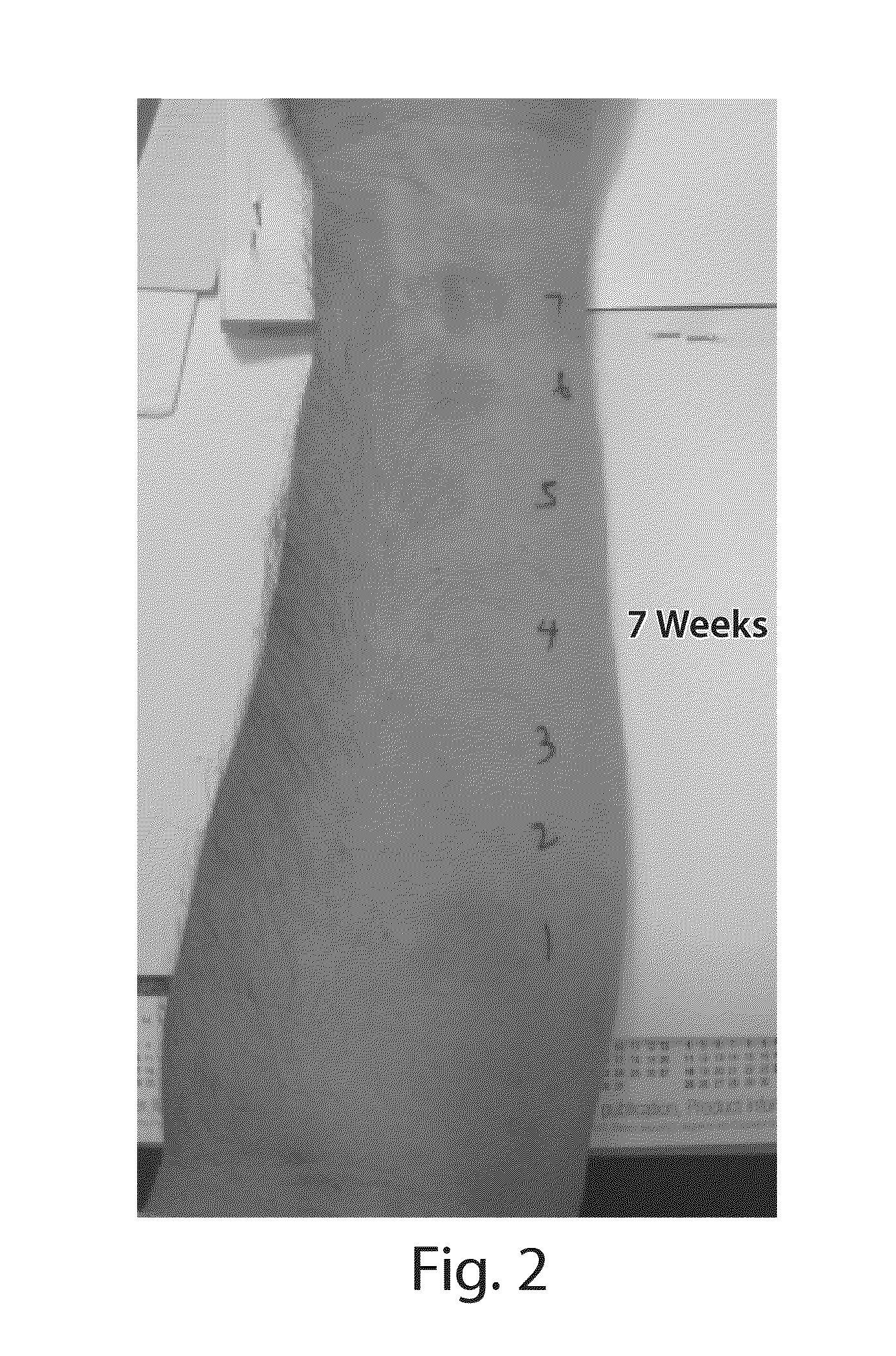Tissue disruption treatment and composition for use thereof
a tissue disruption and composition technology, applied in the field of agents, can solve the problems of affecting the treatment of tissue disruption such as sunburn, soft and connective tissue injury and wounds, and the lack of effective therapeutics, and achieve the effect of addressing the optimal requirements of treatment compositions for tissue disruptions, and not being able to understand the healing process, and not being able to achieve the optimal requirements of treatmen
- Summary
- Abstract
- Description
- Claims
- Application Information
AI Technical Summary
Benefits of technology
Problems solved by technology
Method used
Image
Examples
example 1
Preparation of Tissue Disruption Treatment Composition
[0097]200 litres of sterile cattle blood was centrifuged at 1000-1300×g for 10 minutes and the haemoglobin was removed from the plasma. After centrifugation approximately 100 litres of plasma was gained, and transferred into a dish, suitable for heating and continuous mixing. To the plasma liquid 2 kg Sodium Bicarbonate (NaHCO3) was added and mixed until the NaHCO3 dissolved, then the solution was heated to 80° C. Denatured plasma protein was then recovered and placed on filter paper to dry. The solid sediment was then pressed to produce a 60 kg solid plasma-protein “block” which was then lyophilised by standard procedures. After this process the plasma-protein weighed approximately 8 kg and was used in the preparation of the tissue disruption treatment composition as described below.
[0098]A solution was then prepared comprising 152 litres of water, 8 kg dried plasma-protein as prepared above and 200 ml of a metal-containing solu...
example 2
Manufacture of a Topical Treatment Composition
[0100]A composition comprising the ingredients shown in Table 2 were mixed at 75-80° C. in a 250 litre vacuum homogenizer equipped with anchor and turbo mixers. Then the ingredients shown in Table 3 were added and the mixing was continued at 80-83° C. for 10 minutes with the aid of the turbo mixer.
[0101]A slow cooling process was then carried out using the anchor mixer. When the material reached 60° C., the vacuum was switched on until the end of the cooling.
[0102]At 40-45° C. the ingredients shown in Table 4 were added and mixed for 10 minutes. Mixing with the anchor mixer was continued until the mixture reached 25° C.
[0103]After a standing period of approximately 24 hours, the tissue disruption treatment composition was ready for use.
TABLE 2Item No.Amount Per KgIngredients1 20 gLiposorb S20 (Tween 60)2 20 gCremaphor A63 10 gHydromyristenol4 40 gCetyl alcohol5 70 gCorn Oil (Cold Pressed)6 30 gWheat Germ Oil70.24 gCarrot Oil8 50 g...
example 3
Clinical Trial on Topical Soft Tissue Injury Treatment
[0105]As shown in FIG. 1, a patient was exposed to UV light at 800 mJ for 10 minutes. Topical application of a 1% Oxsoralen (C12H8O4) lotion was used on regions 5, 6 and 7 as a photo sensitizer. Region 8 remained an exposure control. Region 7 received no therapeutic treatment post exposure. Region 6 received topical treatment with the tissue disruption treatment composition described in Example 2 above after 240 minutes post-exposure, while region 5 received a similar amount of tissue disruption treatment composition 5 minutes post-exposure.
[0106]The pictures shown in FIG. 1 were taken 64 hours after exposure. As can be clearly seen there is a vast difference in both treated and untreated areas and between 5 minute post-exposure treatment and 240 minute post-exposure treatment with the tissue disruption treatment composition. As can be seen, control region 7 has a large fluid filled lesion after 64 hours. The application of the t...
PUM
| Property | Measurement | Unit |
|---|---|---|
| temperature | aaaaa | aaaaa |
| temperature | aaaaa | aaaaa |
| concentration | aaaaa | aaaaa |
Abstract
Description
Claims
Application Information
 Login to View More
Login to View More - R&D
- Intellectual Property
- Life Sciences
- Materials
- Tech Scout
- Unparalleled Data Quality
- Higher Quality Content
- 60% Fewer Hallucinations
Browse by: Latest US Patents, China's latest patents, Technical Efficacy Thesaurus, Application Domain, Technology Topic, Popular Technical Reports.
© 2025 PatSnap. All rights reserved.Legal|Privacy policy|Modern Slavery Act Transparency Statement|Sitemap|About US| Contact US: help@patsnap.com


